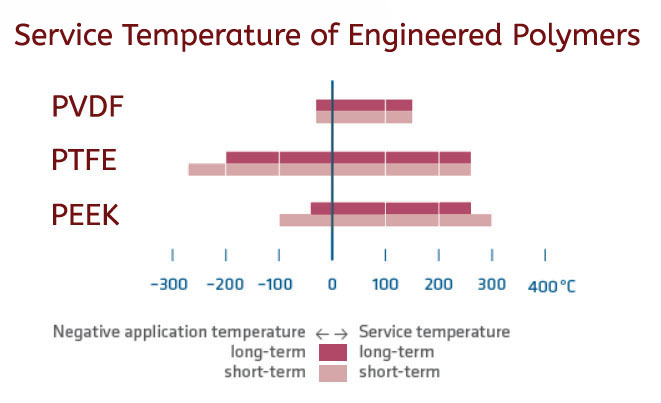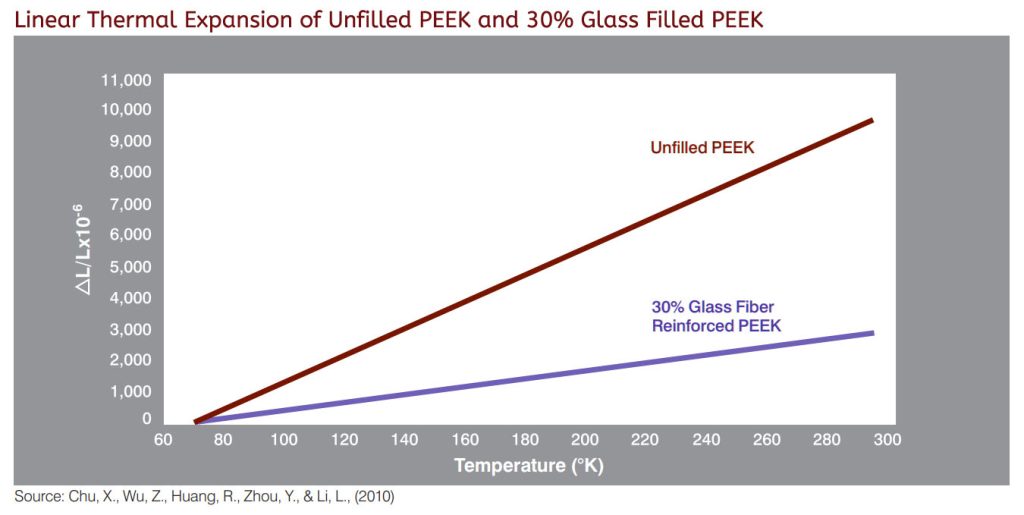Polymers at Cryogenic Temperatures
Most often people want to know how hot a material can be used up to in an application, however for cryogenic applications, in media like liquified gasses (nitrogen, oxygen, carbon dioxide, LNG, etc.), we need to understand how materials perform at very cold temperatures. Polymer fasteners offer an excellent solution in cryogenic environments (including temperatures below -150°C) while minimizing thermal conductivity. As cryogenic applications grow, this area of engineering is finding its way into many industries such as:
• Supercomputers
• Pharmaceutical/biosciences applications
• Superconductors
• Magnetics
Benefits of Using Polymers in Cold Environments
• Low thermal conductivity
• Electrical insulating properties
• Sealing performance
• Ability to function as friction and wear surfaces without external lubrication
• Mechanically stable
That said, polymers do have their trade-offs at cryogenic temperatures. Generally, they become stronger, stiffer and harder – therefore less tough and hence more brittle. But even though their stiffness increases and impact strength is lowered at low temperatures, generally polymers will return to “normal” when heated up again.
Fluoropolymer for Low Temperatures
One class of polymers that excel at cryogenic temperatures are fluoropolymers. Examples of fluoropolymers are PVDF, PTFE and PFA. Like many materials they lose their flexibility at low temperature, but what is unique is that they retain their lubricity, abrasion resistance, and strength. Research has shown that PTFE that it is among the top fluoropolymers for cryogenics. PTFE can be used down to -328 °F (-200 °C) while showing little or no brittleness. It also remains highly flexible to nearly -100 °F below. While there are other fluoropolymers that can perform in extreme cold environments, they are not able to retain their material capabilities like PTFE.
Filled vs Unfilled Polymers
It’s important to point out that fiber reinforcements such as glass or carbon will make the polymers more brittle at cryogenic temperatures. However, if a polymer is being used for an application that involves large changes in temperature, it is a best practice to select a filled grade which will stabilize expansion. This chart shows that PEEK expands approximately 1% compared to only 0.3%. for 30% glass fiber reinforced PEEK.

Ductile / Brittle Transition Temperature Values

